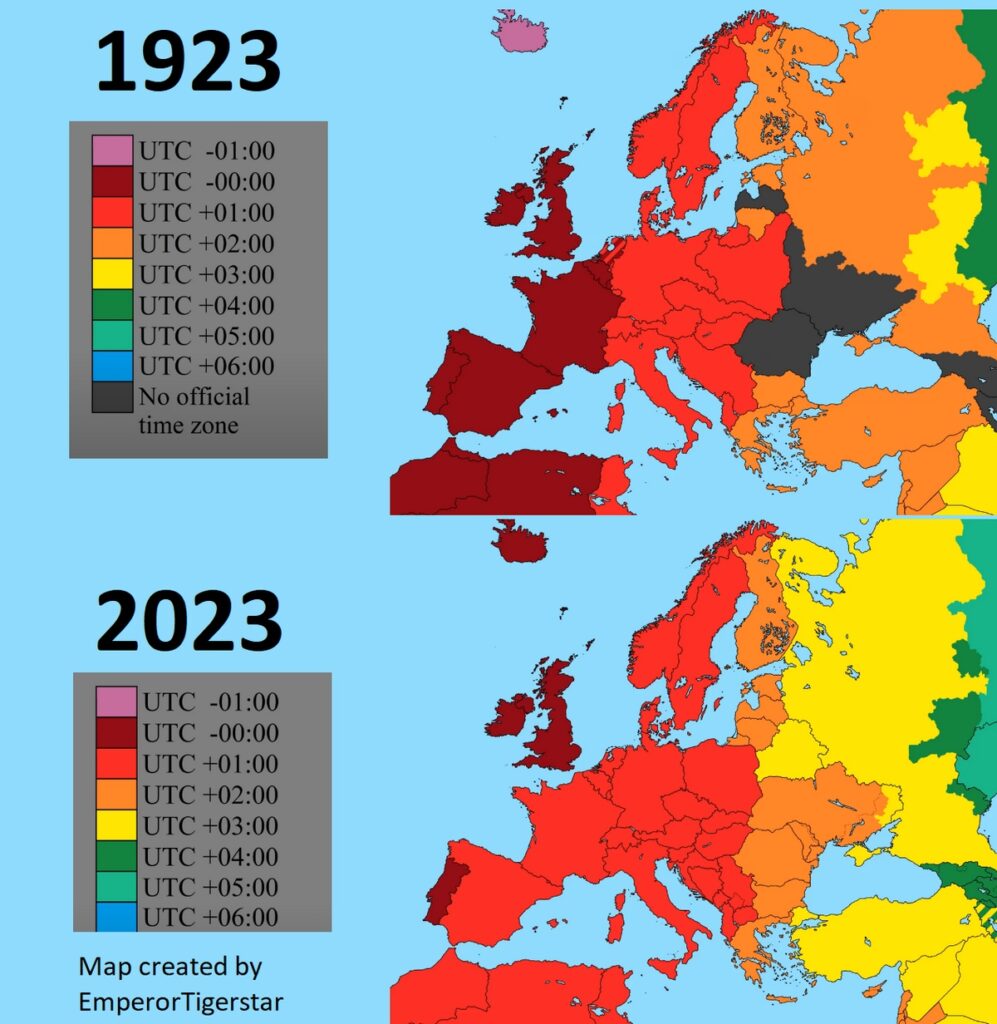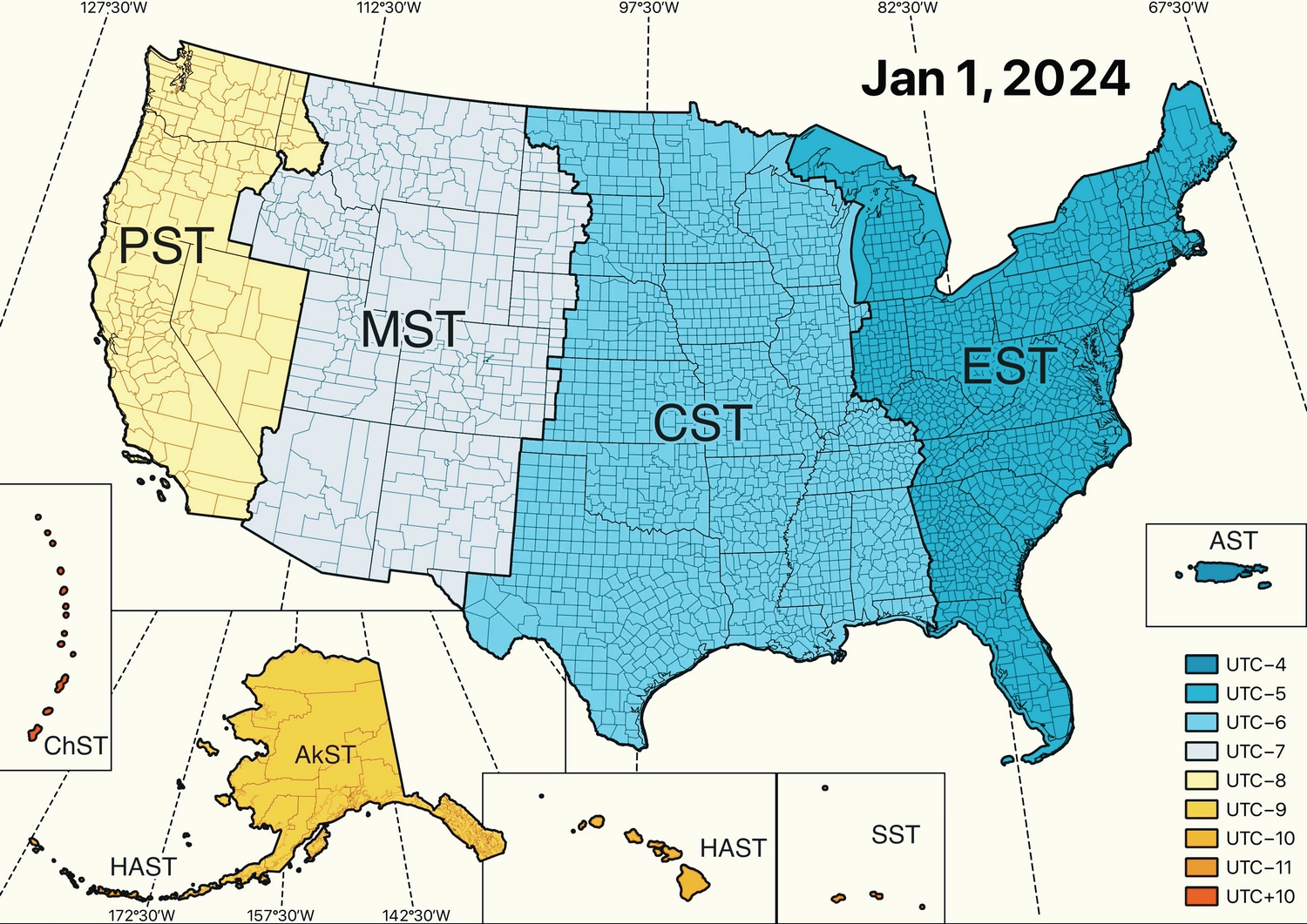History of time zones in Europe
The concept of time zones in Europe has a long and intricate history, intertwined deeply with the development of global navigation, transportation, and communication systems.
Before the widespread adoption of time zones, local mean time was used, where each locality set its clocks to noon when the sun was at its highest point in the sky. This method caused significant discrepancies in time between adjacent regions, which became increasingly problematic with the advent of railways and telegraph lines in the 19th century.
The expansion of railway networks necessitated a more standardized approach to timekeeping. In Britain, for example, railway companies began implementing a single standard time across their networks, known as “Railway Time.” This concept quickly gained traction and influenced timekeeping practices across Europe.
Held in 1884 in Washington D.C., the International Meridian Conference aimed to establish a prime meridian and standardize time zones globally. The Greenwich Meridian in London was chosen as the Prime Meridian, and the conference recommended dividing the world into 24 time zones, each spanning 15 degrees of longitude.
While the decisions made at the International Meridian Conference laid the groundwork for global time standardization, the adoption of time zones in Europe varied across countries and regions. Some countries, like Britain, quickly embraced the concept and adopted Greenwich Mean Time (GMT) as their standard time. Others took more time to transition, facing resistance from local communities accustomed to their own timekeeping practices.
The map of Europe below illustrates what the time zones were in Europe in 1923, compared to 2023.

The two World Wars played a significant role in shaping timekeeping practices in Europe. During World War I, several European countries implemented daylight saving time (DST) to conserve energy. The use of DST became more widespread during World War II and has since become a standard practice in many European countries, albeit with varying start and end dates.
Today, most European countries adhere to standard time zones based on their longitudinal position relative to the Greenwich Meridian. Central European Time (CET), Eastern European Time (EET), and Greenwich Mean Time (GMT) are among the commonly used time zones in Europe, with adjustments for daylight saving time in many regions.
Here is the full history of time zones in Europe: Every Year.
You’re looking for the world time zone map? Pay attention to these map posters.








